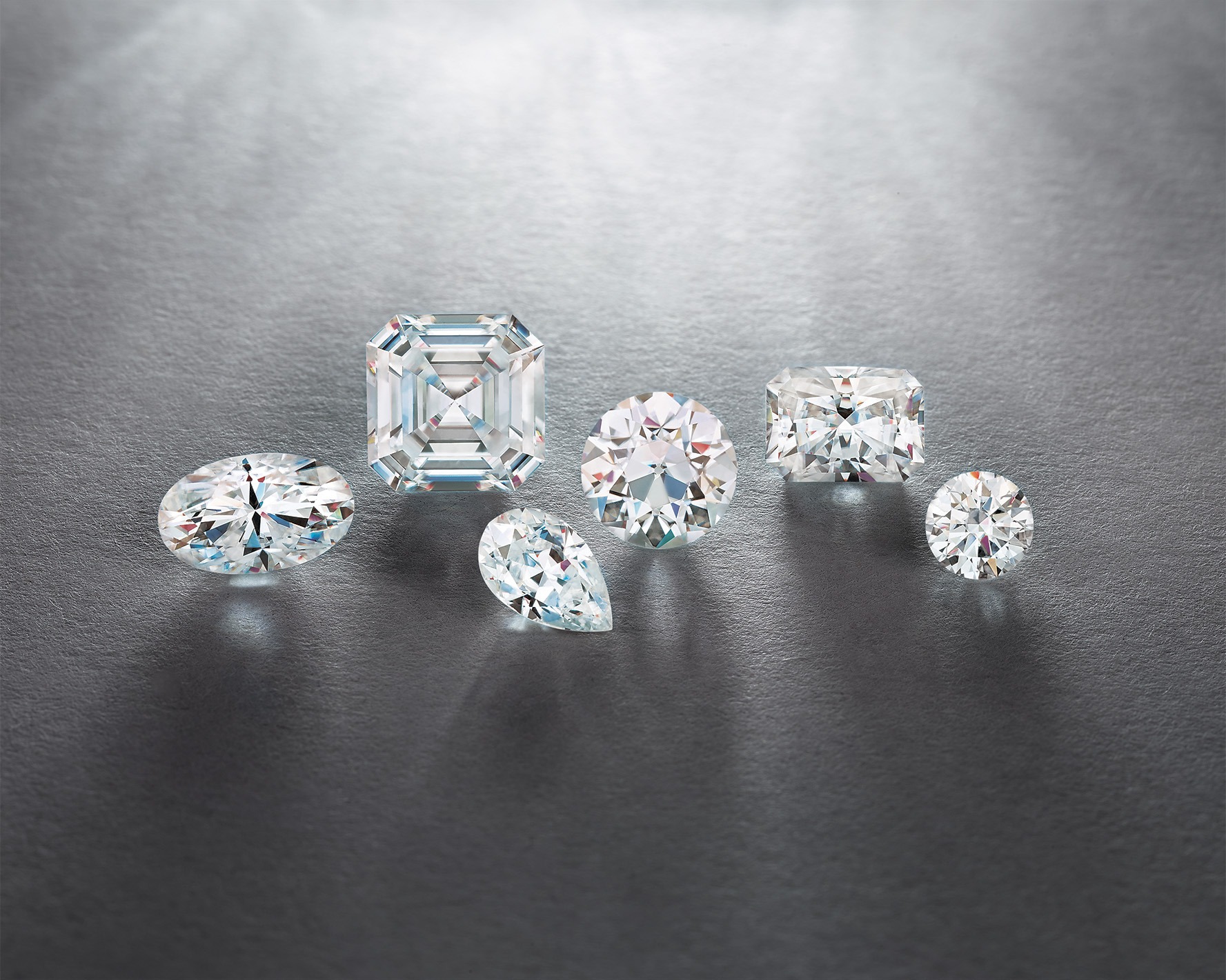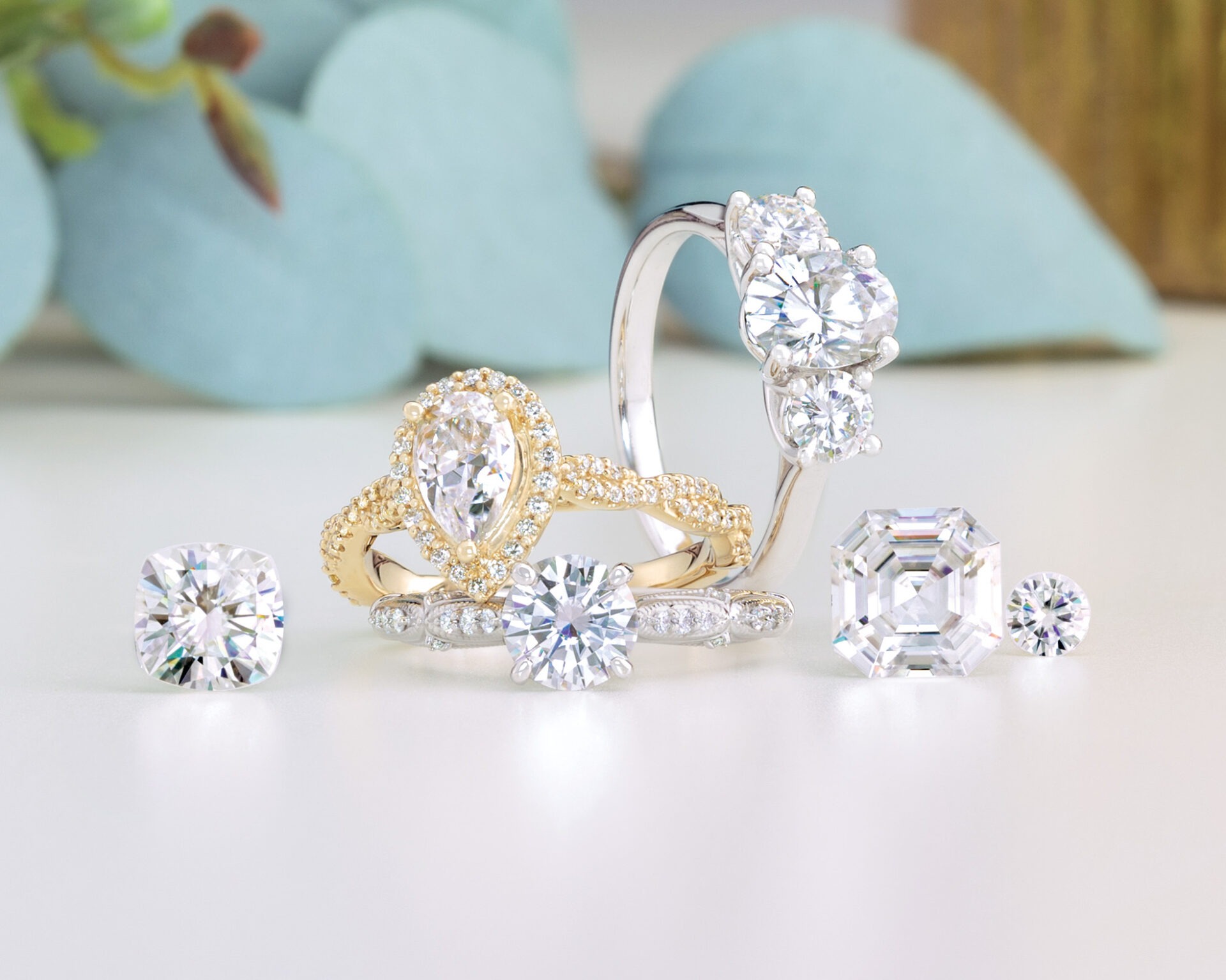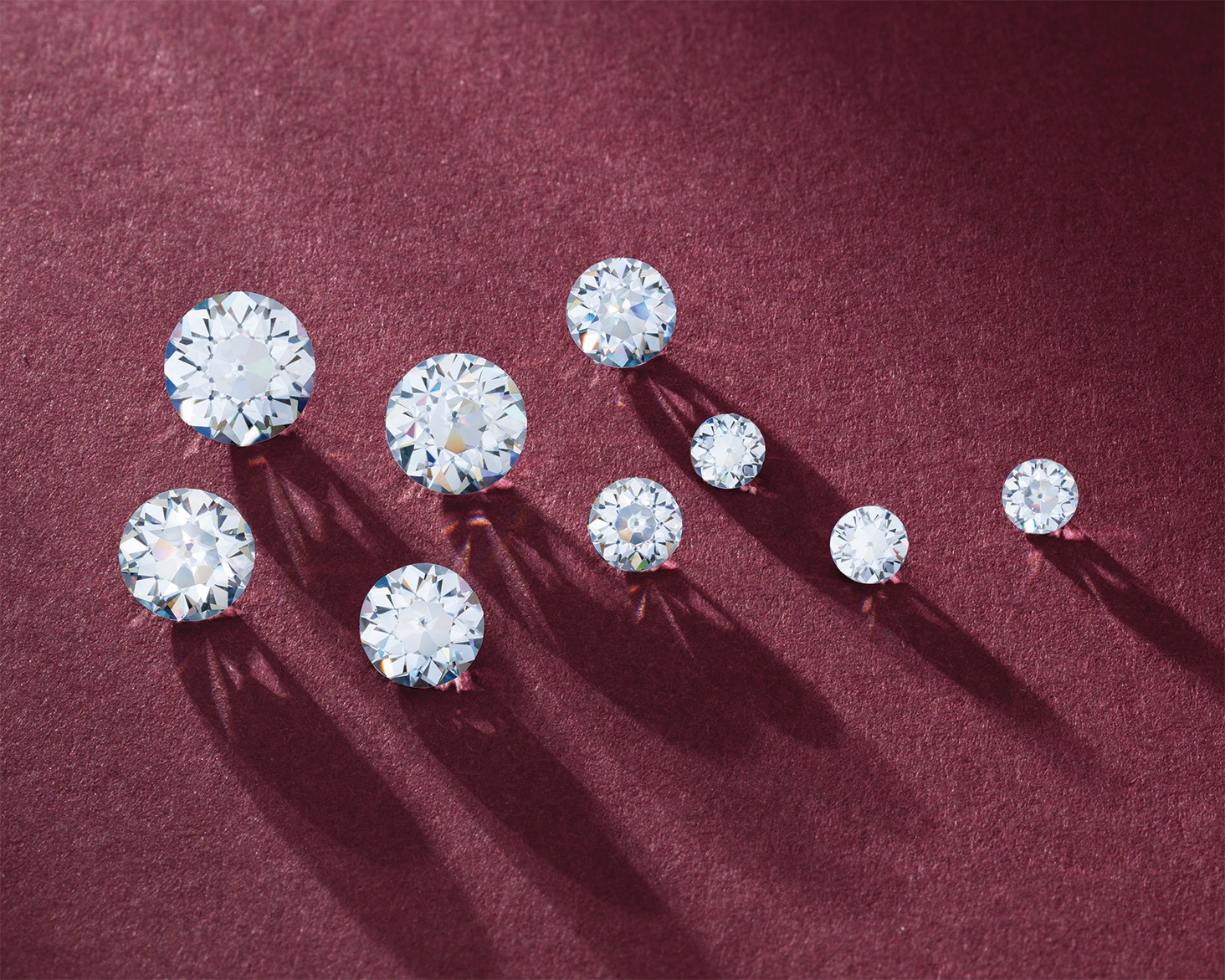Learn how to sell the industry’s two most popular colorless gemstones.
In the ever-evolving world of fine jewelry, trends in colorless gemstones — particularly when they are used as center stones — are constantly shifting. Recent years have witnessed a surge in demand for larger total carat weights and lab-grown options. To navigate this landscape successfully, jewelers must understand the unique qualities of various gemstones and tailor their sales strategies accordingly.
Let’s dive into the essential differences between the most popular colorless gemstone options — Moissanite, lab-grown diamonds, and natural diamonds — helping jewelers make informed choices and tell compelling stories to their customers.

Moissanite vs. Diamonds: Understanding Your Choices
What is Moissanite?
Moissanite, initially discovered in meteorites, has become a popular choice among those seeking an affordable yet brilliant gemstone. Created in laboratories, moissanite is composed of silicon carbide, boasts an exceptional sparkle, and features a durability that makes it perfect for everyday wear. Its dazzling fire and luster make it a compelling alternative to diamonds.
What are Lab-Grown Diamonds?
Lab-grown diamonds, also known as synthetic or created diamonds, are made using advanced technological processes that replicate the natural diamond-growing environment. These diamonds share the same physical, chemical, and optical properties as their mined counterparts. The prominent difference between natural and lab-grown diamonds is the price point.
What are Natural Diamonds?
Natural diamonds, a classic choice for engagement rings and fine jewelry, are formed deep within the Earth’s mantle over millions of years. These exquisite gemstones are cherished for their rarity, unique characteristics, timeless appeal, and heirloom quality.

Differences at a Glance
Though optically similar, there is a list of ways these stones stand out against each other. Something to keep in mind is that each stone has a market and a target audience. It’s best to find the key features your customer deems most important so you can assist them in selecting the right gemstone for their piece.
Durability
Diamonds — both natural and lab-grown — are renowned for their unparalleled hardness, ranking as the hardest substance on the Mohs scale at a 10. They are resistant to scratching from nearly all materials and will not chip easily. Moissanite, while not as hard or tough as a diamond, scores a 9.25 on the Mohs scale and ranks good to excellent on toughness. Both stones are wonderful options for everyday wear.
Brilliance
Light reflects outward from both diamonds and gemstones in dazzling ways. Moissanite is doubly refractive as opposed to the singularly refractive diamond. This means that as a ray of light passes through the gemstone, it is reflected as split in two directions. Some find that that fact makes a Moissanite exude a greater sparkle, though that is not as apparent from the table (top-down view). Either stone will exhibit stunning brilliance, fire, and scintillation that is very pleasing to the eye.
Price
When it comes to price, rarity and heirloom quality play an important role when looking at natural diamonds, lab-grown diamonds, and Moissanite. As the rarest of the three, natural diamonds are the most expensive — reflecting their timeless appeal, premium value, and the length of time it took to form in the earth. Moissanite as a lab-grown gemstone is often seen as a cost-effective choice that offers many of the physical qualities of diamonds at a more attainable price point. Lab-grown diamonds possess the luxury and appeal of natural diamonds but are easier to obtain through human intervention. This places its price point between that of a natural diamond and Moissanite.
Origin
Natural diamonds form over billions of years from within the earth. Each natural diamond is unique and carries characteristics reflecting its one-of-a-kind nature. Lab-grown diamonds and Moissanite are both synthetic gemstones made in a laboratory setting. This results in a more consistent quality.

How to Sell Moissanite and Diamonds
To best serve your customers, follow these sales tips when helping them find their ideal stone.
1. Education is Key
Equip your customers with knowledge about each gemstone type, emphasizing the qualities that matter most to them.
2. Offer Variety
Stock a diverse range of gemstones — including Moissanite, lab-grown diamonds, and natural diamonds — to cater to different preferences and budgets. Remember, there is a customer for every option.
3. Compare Side by Side
Allow customers to view stones side by side, enabling them to appreciate the similarities and differences in optical appearance.
4. Demonstrate Testing and Screening
Instill confidence in every purchase by using gemological testing and screening tools to showcase the authenticity and quality of your products.
Brilliance Beyond Belief
Moissanite, lab-grown diamonds, and natural diamonds offer stunning and sparkling options for every kind of customer. By understanding the unique attributes of each, jewelers can guide their customers toward the right fit, ensuring a brilliant purchase and a lasting and meaningful symbol of love and beauty.

